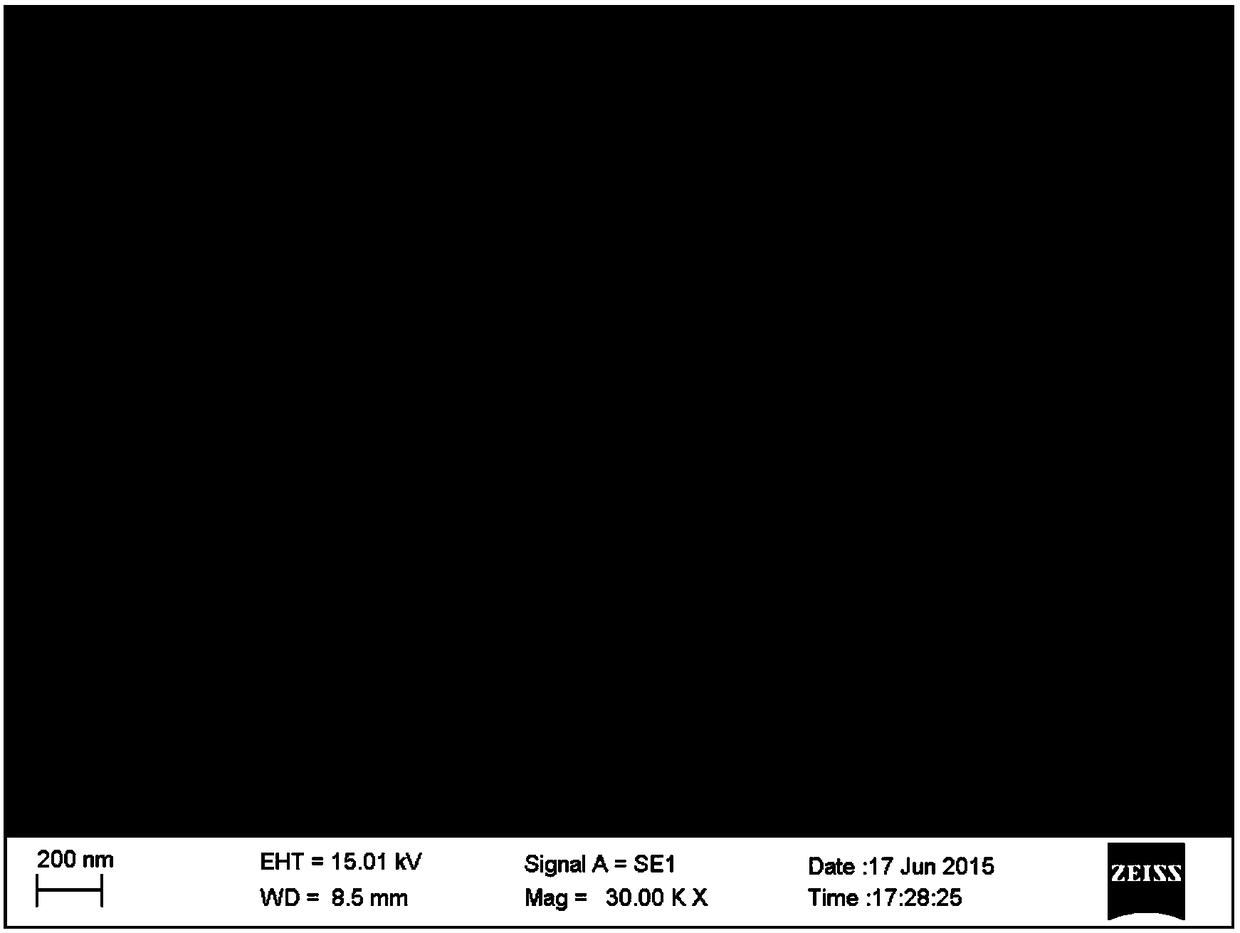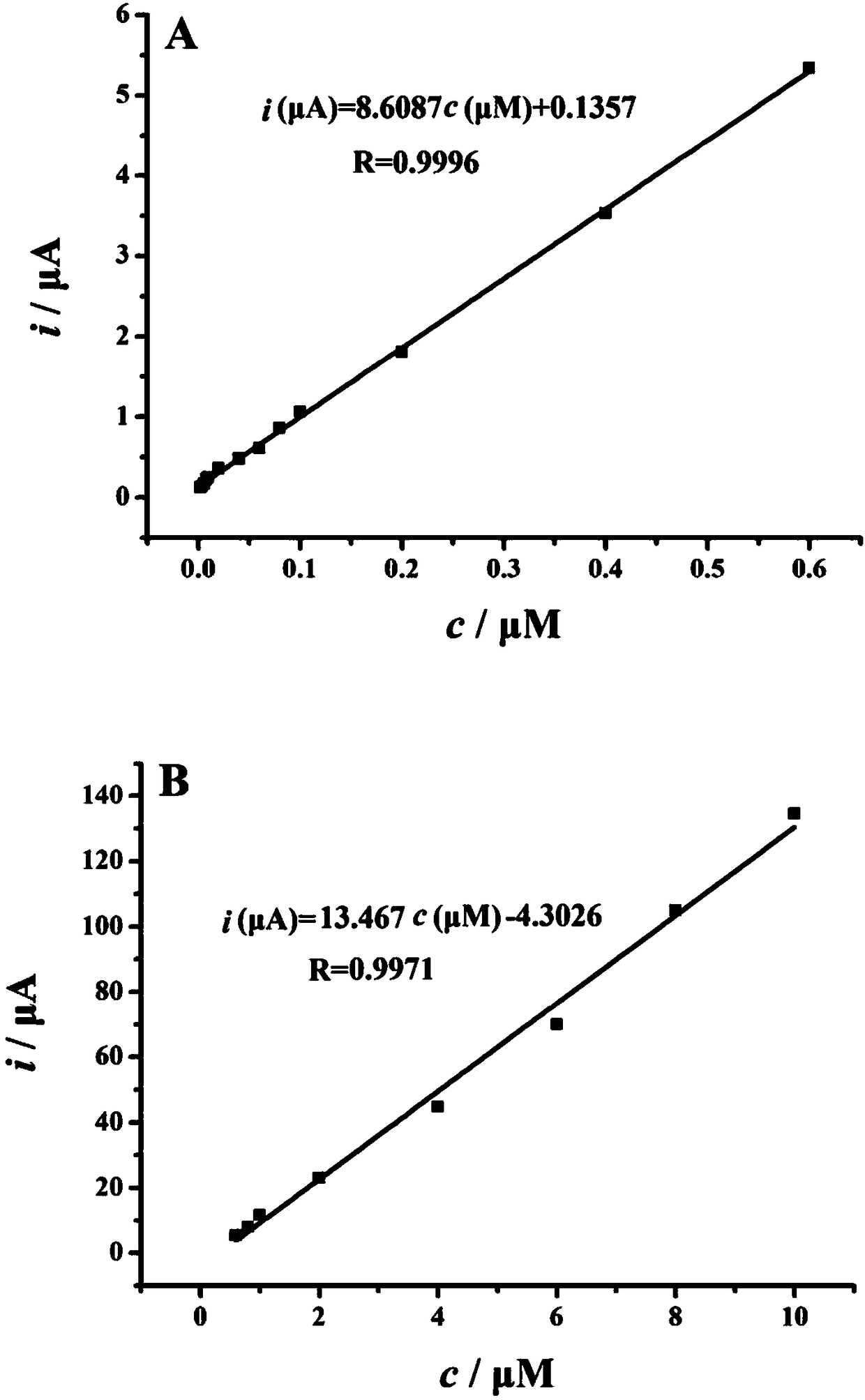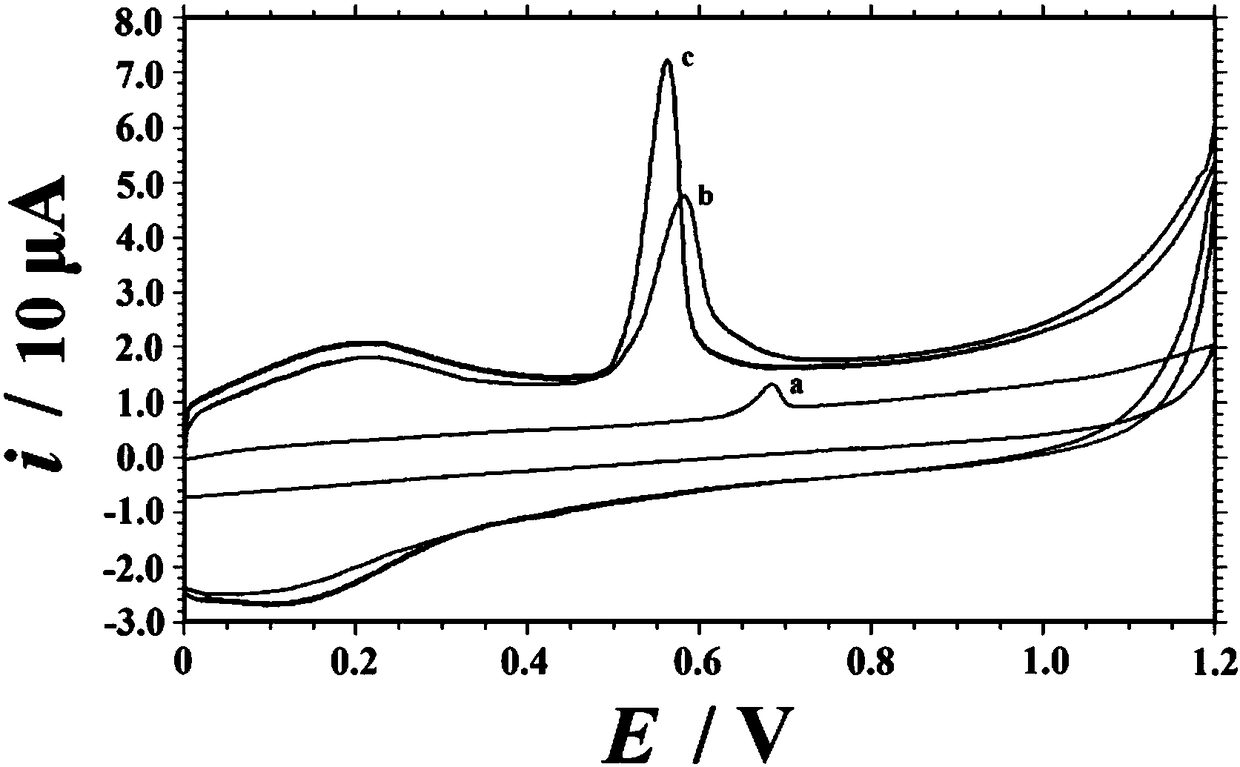A kind of electrochemical sensor for detecting uric acid and its preparation and application
An electrochemical and sensor technology, applied in the field of electrochemical analysis, can solve the problems of easy agglomeration, limited graphene research and application, few functional groups, etc., to avoid collapse, low detection limit, and uniform distribution.
- Summary
- Abstract
- Description
- Claims
- Application Information
AI Technical Summary
Problems solved by technology
Method used
Image
Examples
Embodiment 1
[0043] The preparation method of the electrochemical sensor of the present embodiment comprises the following steps:
[0044] (1) Preparation of graphite oxide: prepared by the improved Hummers method, take 23mL concentrated sulfuric acid in a three-necked bottle, add 0.5g graphite powder, 0.5g sodium nitrate, place the three-necked bottle in an ice-water bath, stir and cool at low speed for about After 10 minutes, weigh 3.0g of potassium permanganate and add it slowly several times. After the potassium permanganate is added, continue to stir at a low speed for 30 minutes. Move the three-necked bottle to a warm water bath at 35°C and stir at a low speed for 120 minutes. Add 40mL deionized water to the three-necked bottle, keep a constant speed and slow when adding water, move the three-necked bottle to a 95°C water bath and stir for 30 minutes, add 100mL deionized water, and pour the reaction solution into 10mL 30% HO 2 o 2 In this case, the reaction product was bright yello...
Embodiment 2
[0060] The selectivity of the modified electrode prepared in Example 1 was determined. Interference performance is one of the important indicators to measure the practicability of electrochemical sensors. 10μM uric acid is measured, the allowable measurement error is in the range of ±5%, and the influence of some common metal ions, anions, amino acids and other substances in the human body on the determination of uric acid is tested. It was shown that 100 times the K + 、Na + , V 5+ 、Ba 2+ , Zn 2+ , Ca 2+ 、Cd 2+ , Mg 2+ 、Al 3+ , Cl - , L-Aspartic Acid, L-Leucine, L-Valine, L-Glutamic Acid, L-Leucine, L-Isoleucine, L-Arginine, L-Lysine , urea, glucose, 10 times Cu 2+ , Fe 3+ , Pb 2+ 、 Bi 3+ And epinephrine did not interfere with the determination of uric acid. In organisms, ascorbic acid and dopamine often coexist with uric acid and interfere with the determination of uric acid. Experiments show that the oxidation peak potentials of ascorbic acid, dopamine, and u...
Embodiment 3
[0062] Detection of uric acid in human urine. Take 1.0 mL of urine samples from each of the three persons to be tested and put them in 50 mL volumetric flasks. Take 1.0mL of this diluted sample in the electrolytic cell during the measurement, and use 0.1mol / L H 3 PO 4 -NaH 2 PO 4 Buffer solution (pH 3.0) was diluted to 10 mL, which corresponds to a 500-fold dilution of the original urine sample. Connect the modified electrode prepared in Example 1 to an electrochemical workstation, perform voltammetry scanning, and obtain an electrochemical signal response. Then add a certain amount of uric acid standard substance for recovery determination, the results are shown in Table 1.
[0063] Table 1 Determination results and recoveries of uric acid in urine samples
[0064]
[0065] The formula for calculating the recovery rate is:
[0066] Recovery rate = (m a -m x )÷m s ×100%
[0067] In the formula: m a - measured amount after adding standard substance; m x - the or...
PUM
| Property | Measurement | Unit |
|---|---|---|
| thickness | aaaaa | aaaaa |
| mechanical strength | aaaaa | aaaaa |
| carrier mobility | aaaaa | aaaaa |
Abstract
Description
Claims
Application Information
 Login to View More
Login to View More - R&D
- Intellectual Property
- Life Sciences
- Materials
- Tech Scout
- Unparalleled Data Quality
- Higher Quality Content
- 60% Fewer Hallucinations
Browse by: Latest US Patents, China's latest patents, Technical Efficacy Thesaurus, Application Domain, Technology Topic, Popular Technical Reports.
© 2025 PatSnap. All rights reserved.Legal|Privacy policy|Modern Slavery Act Transparency Statement|Sitemap|About US| Contact US: help@patsnap.com



